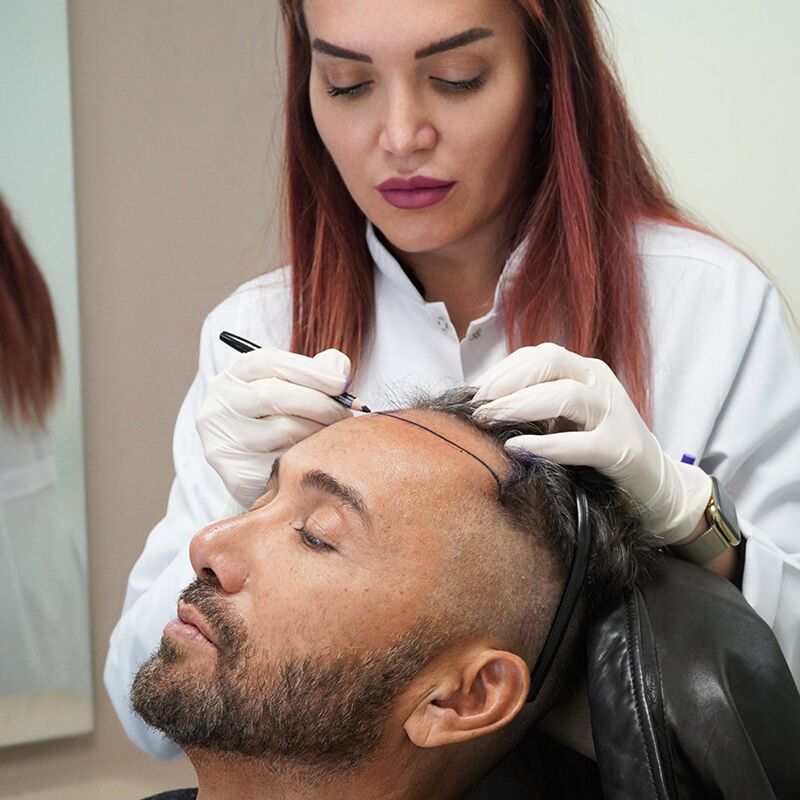When considering permanent hair restoration, many people wonder: can hair transplants fail? Although modern techniques have significantly improved success rates, the possibility of failure still exists due to various reasons. Whether you’re experiencing hair thinning, bald patches, or a receding hairline, it’s important to understand the factors that contribute to Hair Transplant in Dubai(زراعة الشعر في دبي) success or failure. This knowledge helps manage expectations and encourages proactive aftercare for long-term results.
Understanding Hair Transplant Failure:
What Does a Failed Hair Transplant Look Like?
Failure doesn’t necessarily mean complete loss of all transplanted follicles. A failed hair transplant may present as:
-
Poor hair growth in the transplanted area
-
Unnatural hairline or inconsistent density
-
Scarring or patchiness
-
Uneven direction or misaligned hair follicles
The reasons behind unsuccessful hair transplants can include poor graft handling, lack of post-procedure care, improper technique, or underlying scalp conditions.
Importance of Proper Planning and Execution:
Why Expertise and Personalization Matter
To avoid transplant failure, several aspects must align correctly:
-
Accurate assessment of donor hair availability
-
Realistic design of the hairline based on facial structure
-
Proper handling and implantation of hair grafts
-
Adherence to aftercare instructions
Hair transplant success is not only about extracting and placing grafts; it’s about planning with a long-term view, especially considering progressive male or female pattern baldness.
Poor planning may result in:
-
Overharvesting the donor area
-
Limited future transplant options
-
Disproportionate hair distribution
Common Causes of Hair Transplant Failure:
Factors That Can Undermine Results
Many people ask, why does a hair transplant sometimes not work? Here are the most common causes:
-
Poor technique or experience: Inexperienced handling can damage grafts before implantation.
-
Low graft survival rate: Grafts may die if not properly hydrated or transplanted quickly.
-
Improper aftercare: Scratching, sweating, or harsh washing can dislodge grafts in the healing phase.
-
Underlying scalp conditions: Dermatitis, infection, or autoimmune diseases can impact graft survival.
-
Smoking and poor circulation: Reduced blood flow to the scalp hinders graft nourishment.
-
Genetic progression of hair loss: Non-transplanted hair may continue to thin around the restored areas.
These risks highlight the importance of choosing the right technique, such as FUE (Follicular Unit Extraction) or FUT (Follicular Unit Transplantation) based on individual needs.
Benefits of Successful Hair Transplants:
Why It’s Still a Popular and Effective Solution
Despite possible risks, Hair Transplant(زراعة الشعر) remain one of the most reliable methods of restoring lost hair permanently. When done correctly, the benefits include:
-
Natural-looking results that mimic your original hair pattern
-
Permanent restoration of bald areas
-
Increased confidence and emotional well-being
-
Low maintenance compared to temporary solutions like wigs or topical products
A successful transplant allows individuals to return to regular grooming and enjoy styling flexibility with their restored hair.
FAQs About Hair Transplant Failures:
Can hair transplants be redone if they fail?
Yes, a revision transplant is possible, depending on donor hair availability and scalp condition.
How long before I know if my hair transplant has failed?
Most transplanted hair begins shedding within the first few weeks and regrows in 3 to 6 months. Lack of growth after 8–12 months may indicate failure.
Does everyone have the same risk of failure?
No. Risk varies based on scalp health, technique used, and adherence to aftercare instructions.
Can stress cause a transplant to fail?
Excessive stress may affect healing and hormone levels, which can negatively impact outcomes.
Is shock loss a sign of failure?
Shock loss is temporary and common, especially around the recipient or donor area. It does not always indicate failure.
Conclusion:
So, can hair transplants fail? The answer is yes—but failure is preventable in most cases with the right planning, skilled execution, and proper aftercare. Understanding the causes of failure, from technical errors to personal habits, empowers individuals to make informed decisions. For those struggling with hair thinning, balding, or a patchy hairline, modern hair transplant methods still offer one of the most effective and long-lasting solutions. With realistic expectations and a tailored approach, the chances of achieving natural, full hair regrowth are significantly increased.







0 Comments